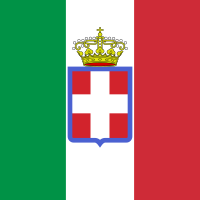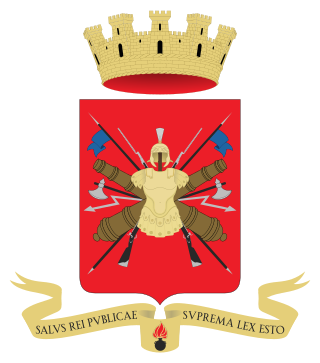
The Italian Army is the land force branch of the Italian Armed Forces. The army's history dates back to the Italian unification in the 1850s and 1860s. The army fought in colonial engagements in China, Libya, Northern Italy against the Austro-Hungarian Empire during World War I, Abyssinia before World War II and in World War II in Albania, Balkans, North Africa, the Soviet Union, and Italy itself. During the Cold War, the army prepared itself to defend against a Warsaw Pact invasion from the east. Since the end of the Cold War, the army has seen extensive peacekeeping service and combat in Afghanistan and Iraq. Its best-known combat vehicles are the Dardo infantry fighting vehicle, the Centauro tank destroyer and the Ariete tank and among its aircraft the Mangusta attack helicopter, recently deployed in UN missions. The headquarters of the Army General Staff are located in Rome opposite the Quirinal Palace, where the president of Italy resides. The army is an all-volunteer force of active-duty personnel.

The Cavalry Brigade "Pozzuolo del Friuli" is a brigade of the Italian Army, based in the Friuli Venezia Giulia and Veneto regions. The Brigade consists of a command unit, a cavalry regiment, an amphibious infantry regiment, an artillery regiment, an engineer regiment and a logistic regiment.
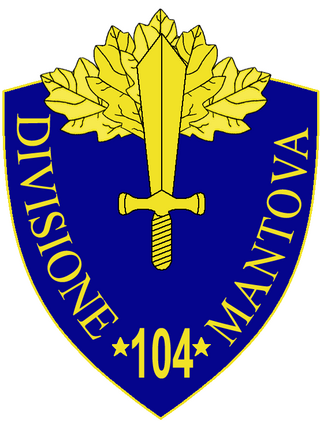
The 104th Infantry Division "Mantova" was an infantry division of the Royal Italian Army during the Second World War. The Mantova was named for the city of Mantua and classified as an auto-transportable division, meaning it had some motorized transport, but not enough to move the entire division at once.

The 20th Infantry Division "Friuli" was an infantry division of the Royal Italian Army during World War II. The Friuli was formed on 24 August 1939 by splitting the 20th Infantry Division "Curtatone e Montanara" into the Friuli and the 44th Infantry Division "Cremona". The Friuli was named for the region of Friuli, but based in Tuscany, where it also recruited most of its troops. The division's headquarter and its regiments, with the exception of the 87th Infantry Regiment located in Siena, were based in Livorno. The division served as occupation force on Corsica and fought German units after the Armistice of Cassibile was announced on 8 September 1943. The division then served with the Italian Co-belligerent Army and remained active into the early stages of the Cold War.
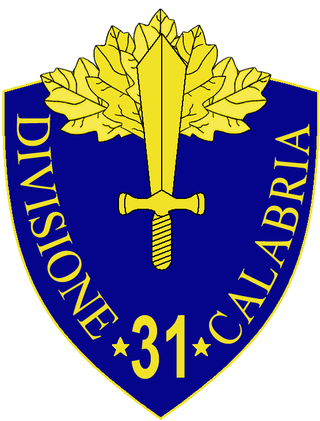
The 31st Infantry Division "Calabria" was an infantry division of the Royal Italian Army during World War II. The Calabria was formed in Sassari and named for the region of Calabria. The division was part of the garrison of Sardinia, where it remained until the Armistice of Cassibile, after which it served in the Italian Co-belligerent Army.

The 44th Infantry Division "Cremona" was an infantry division of the Royal Italian Army during World War II. The Cremona was formed on 15 September 1939 by splitting the 20th Infantry Division "Curtatone and Montanara" into the 20th Infantry Division "Friuli" and 44th Infantry Division "Cremona". The division was named for the city of Cremona. The division served as occupation force on Corsica and fought German units after the Armistice of Cassibile was announced on 8 September 1943. The division then served with the Italian Co-belligerent Army and remained active until the 1975 Italian Army reform.
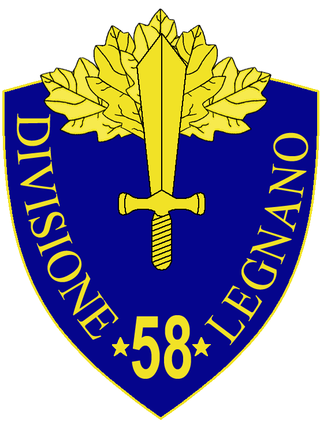
The 58th Infantry Division "Legnano" was an infantry division of the Royal Italian Army during World War II. The Legnano's predecessor division was formed on 8 February 1934 in Milan and named for the medieval Battle of Legnano. On 24 May 1939 the division split to form the 6th Infantry Division "Cuneo" and the 58th Infantry Division "Legnano". After the announcement of the Armistice of Cassibile the Legnano resisted the invading German forces. The division's staff and 67th Infantry Regiment "Legnano" were used to form the first unit of the Italian Co-belligerent Army, which fought on the allied side in the Italian campaign. On 17 February 1944 the division's last units joined other commands and the division was officially dissolved.

The 152nd Infantry Division "Piceno" was an infantry division of the Royal Italian Army during World War II. The Piceno was formed on 20 February 1942 and named for the region of Piceno. The Piceno was classified as an occupation infantry division, which meant that the division's artillery regiment consisted of two artillery groups instead of the three artillery groups of line infantry divisions and that the divisional mortar battalion was replaced by a divisional machine gun battalion.

The III Army Corps was one of three corps the Italian Army fielded during the Cold War. Based in the regions of Lombardy and Piedmont the corps was the army's operational reserve, while the 4th Alpine Army Corps and the 5th Army Corps, both based in the North East of Italy, were the army's front-line units. After the end of the Cold War the corps was reduced in size and on 1 December 2000 it ceded its last brigades to the 1st Defence Forces Command. The personnel of the 3rd Army Corps was used to raise the NATO Rapid Deployable Italian Corps in January 2001.
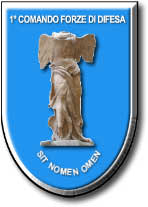
The V Army Corps was one of three corps the Italian Army fielded during the Cold War. Based in the regions of Veneto and Friuli-Venezia-Giulia the corps was the army's main combat force. The 5th Army Corps was arrayed close to the Yugoslavian border and tasked with meeting any Warsaw Pact forces that crossed the border. On the left flank of the corps the 4th Alpine Army Corps was tasked with blocking the Alpine passes and in the rear of the corps the 3rd Army Corps served as operational reserve. After the end of the Cold War the corps was reduced in size and on 1 October 1997 it became the 1st Defence Forces Command. In 2013 the COMFOD 1° was disbanded and its function and brigades taken over by the 20th Infantry Division Friuli in Florence.

The Mechanized Brigade "Mantova" was a mechanized brigade of the Italian Army. Its core units were mechanized infantry battalions. The brigade's headquarters was in the city of Cividale del Friuli and all the brigade's units were based in the region of Friuli Venezia Giulia. In 2003, the "Mantova" was raised again as a division command.

The Mechanized Brigade "Legnano" was a mechanized brigade of the Italian Army. Its core units were mechanized infantry battalions. The brigade's headquarters was in the city of Bergamo in Lombardy. The name of the brigade commemorates the Lombard League victory in the Battle of Legnano in 1176 and its coat of arms depicts the Monument to the Warrior of Legnano in the centre of Legnano.
The Italian Liberation Corps was a corps of the Italian Co-belligerent Army during the Italian campaign of World War II. After the announcement of the Armistice of Cassibile on 8 September 1943 the Italian government began the formation of units to fight on the allied side against Germany. On 18 April 1944 the Italian Liberation Corps was formed, which after an intense cycle of combat operations was disbanded on 24 September 1944 to form division-sized combat groups.

The 183rd Paratroopers Regiment "Nembo" is an active unit of the Italian Army based in Pistoia in Tuscany. The regiment is part of the Italian Army's infantry arm's Paracadutisti speciality and assigned to the Paratroopers Brigade "Folgore".
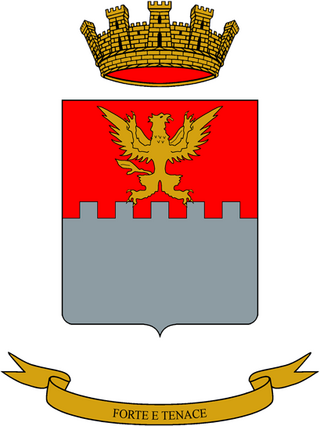
The Logistic Regiment "Pozzuolo del Friuli" is a military logistics regiment of the Italian Army based in Remanzacco in Friuli Venezia Giulia. The battalion was formed in 1976 as Logistic Battalion "Mantova" and assigned to the Mechanized Division "Mantova". After the division was disbanded in 1986 the battalion was reorganized as a corps logistic battalion, renamed 8th Maneuver Logistic Battalion "Carso" and assigned to the 5th Army Corps. In 1994 the battalion was reorganized as 8th Maneuver Logistic Regiment "Carso". Today the regiment is the logistic unit of the Cavalry Brigade "Pozzuolo del Friuli". The regimental anniversary falls, as for all units of the Transport and Materiel Corps, on 22 May, the anniversary of the Italian Army's first major automobile use to transport reinforcements to counter the Austro-Hungarian Offensive at Asiago in 1916.

The 21st Infantry Regiment "Cremona" is an inactive unit of the Italian Army last based in Alessandria. Founded in 1848 the regiment is part of the Italian army's infantry arm and named for the city of Cremona.

The 22nd Infantry Regiment "Cremona" is an inactive unit of the Italian Army last based in Fossano. Founded in 1848 the regiment is part of the Italian army's infantry arm and named for the city of Cremona.

The 7th CIMIC Regiment is a military engineer regiment of the Italian Army based in Motta di Livenza in Veneto. The regiment is a multinational civil-military co-operation (CIMIC) unit and assigned to the Tactical Intelligence Brigade. In 1944 the Italian Co-Belligerent Army formed the CIV Mixed Engineer Battalion for the Combat Group "Mantova", which fought on the allied side in the Italian campaign of World War II. In 1946 the battalion split to form the Engineer Battalion "Mantova" and the Connections Battalion "Mantova", which were both assigned to the Infantry Division "Mantova". In 1975 the battalion was renamed 104th Engineer Battalion "Torre" and assigned the flag and traditions of the 7th Engineer Regiment, which had been active between 1926 and 1943. In 1986 the Mechanized Division "Mantova" was disbanded and shortly thereafter so was the battalion. The regimental anniversary falls, as for all engineer units, on June 24, the end of the Second Battle of the Piave River in 1918. On 25 January 2024 the flag and traditions of the 7th Engineer Regiment, which includes the traditions of the CIV Mixed Engineer Battalion, Engineer Battalion "Mantova", and 104th Engineer Battalion "Torre", were assigned to the Multinational CIMIC Group, which, upon receiving the flag of the 7th Engineer Regiment, was renamed 7th CIMIC Regiment.

The 114th Infantry Regiment "Mantova" is an inactive unit of the Italian Army last based in Tricesimo. The regiment is named for the city of Mantova and part of the Italian Army's infantry arm.

The 155th Artillery Regiment "Emilia" is an inactive field artillery regiment of the Italian Army, which was based in Udine in Friuli-Venezia Giulia. Originally an artillery regiment of the Royal Italian Army, the regiment was assigned in World War II to the 155th Infantry Division "Emilia", with which the regiment was deployed to occupied Montenegro. After the announcement of the Armistice of Cassibile the division and regiment battled Wehrmacht forces near Kotor and then escaped over the Adriatic Sea to Apulia in Southern Italy, where the survivors joined the Italian Co-belligerent Army. In October 1944 the regiment joined the Combat Group "Mantova", which was earmarked to join the British Eighth Army, but the war ended before the Combat Group "Mantova" reached the front. During the Cold War the regiment was assigned to the Infantry Division "Mantova" and from 1976 the Mechanized Division "Folgore". The unit was disbanded in 1992. The regimental anniversary falls, as for all Italian Army artillery regiments, on June 15, the beginning of the Second Battle of the Piave River in 1918.
